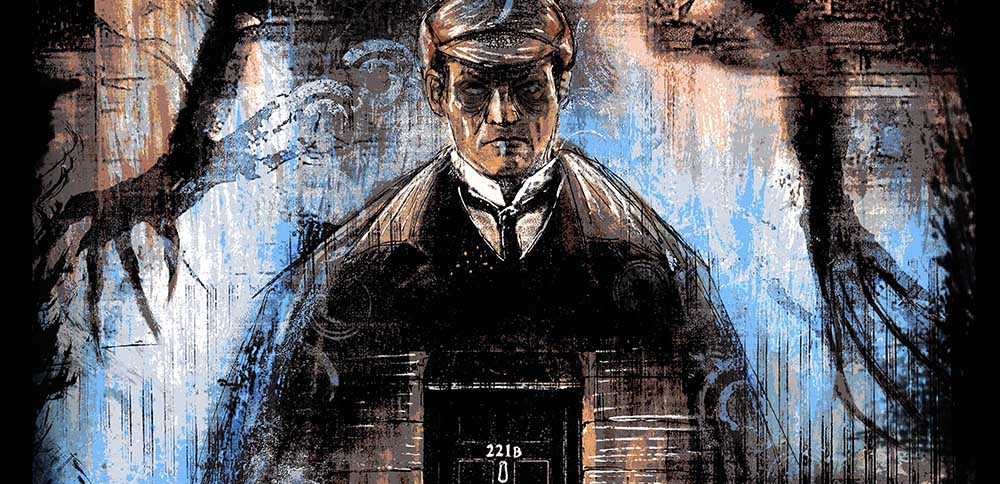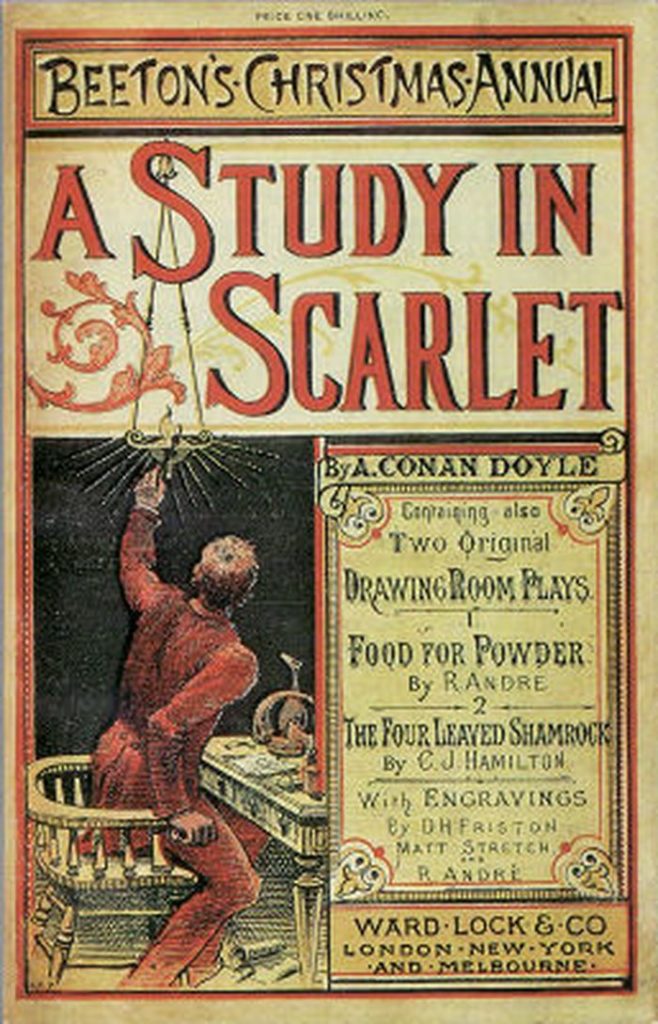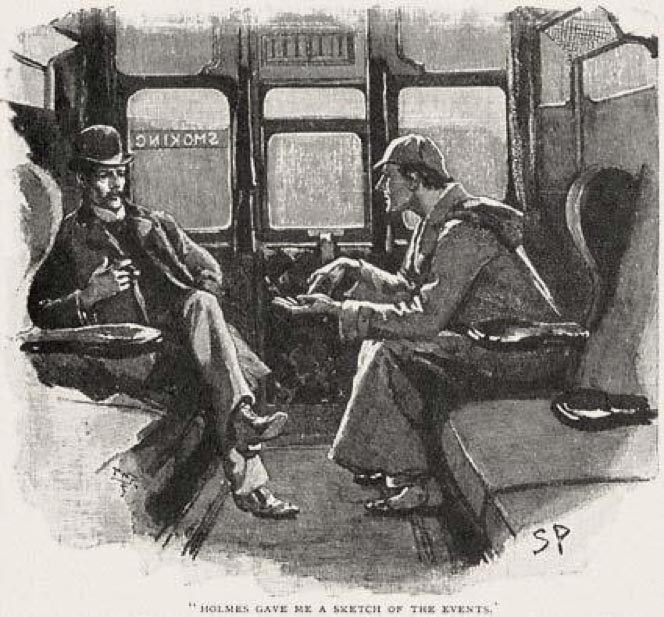
Melbourne
March 29-30, 2025
Melbourne Showgrounds

Next month, Supanova Melbourne and Gold Coast special guests – the International Fantasy Writers’ Guild (IFWG) Publishing Australia – will release their latest anthology, Sherlock Holmes and Doctor Was Not. The release will contain new Holmes stories from 12 accomplished authors, with each tale providing a vastly different answer to the question: What if Sherlock Holmes’ roommate, biographer and most trusted colleague, was not John H. Watson?

Sherlock Holmes’ first ever published case, as featured in the 1887 Beeton’s Christmas Annual
A larger than life figure, who has towered over popular literature and culture since his debut over 132 years ago in Sir Arthur Conan Doyle’s A Study in Scarlet, the world’s greatest consulting detective, Sherlock Holmes, left an impact on the world that cannot be overstated.
From the staggering 56 stories and four feature-length novels which comprise Conan Doyle’s original Holmesian canon, through to an ever-growing repertoire of new books, films, comic books and video game adaptations crafted by contemporary fans and creators, there would hardly be a person alive today who didn’t know the name of Sherlock Holmes and what it was that he got up to in his rooms on 221B Baker Street.
But there’s still quite a lot of mystery surrounding Sherlock Holmes and his exploits, and there is much that fans of the great detective may not know about their favourite private investigator. So, let’s take a look at some things you probably didn’t know about the great Sherlock Holmes.
SHERLOCK IS A GUINNESS WORLD RECORDS HOLDER
Modern film and TV audiences may be more accustomed to seeing Holmes played by the actors Robert Downey Jnr. or Benedict Cumberbatch, or perhaps even by Johnny Lee Miller. Even US comedian Will Ferrell has taken a turn donning the deerstalker hat in last year’s Holmes and Watson. But those performances are but a mere drop in the ocean for the 75+ actors who have portrayed Sherlock in film and television over the decades, a list which includes names like Christopher Lee, Peter Cushing, Christopher Plummer, John Cleese, Basil Rathbone, Peter Capaldi, Roger Moore and Sir Ian McKellan, just to name a few.
With well over 250 appearances in film and television since his creation, and with more in the works, Sherlock Holmes holds the current World Record for the single human literary character with the most ever film and television adaptations.
Just beating Sherlock out for the most ever non-human literary character is Bram Stoker’s Dracula.
SHERLOCK WAS PARTIALLY BASED ON A REAL PERSON
Doctor Joseph Bell was a Scottish surgeon and lecturer at the medical school at the University of Edinburgh. Considered a pioneer in the field of forensic science, Bell was often consulted by Scotland Yard in relation to various cases, including the infamous Jack the Ripper murders. In 1877, Arthur Conan Doyle first met Bell and became his clerk at the Edinburgh Royal Infirmary. Ten years later, when Conan Doyle first began publishing his Sherlock stories, he was forthcoming in suggesting that much of the character was loosely based on Conan Doyle’s former employer and his notable method of careful observation and applied deductive reasoning.
SHERLOCK NEVER ACTUALLY SAID “IT’S ELEMENTARY, MY DEAR WATSON”
Despite it being a phrase commonly associated with the great detective, not once in any of the 60 original Sherlock Holmes adventures did Sir Arthur Conan Doyle ever have his character utter the phrase “It’s elementary, my dear Watson.” Rather the origins of that phrase can be solely attributed the film adaptations of Conan Doyle’s work and the many other non-canonical works which followed over the years.
 SHERLOCK’S ICONIC DEERSTALKER LOOK WAS DUE TO SOMEONE ELSE
SHERLOCK’S ICONIC DEERSTALKER LOOK WAS DUE TO SOMEONE ELSE
Much like the phrase “It’s elementary, my dear Watson,” Sherlock is also often associated with his signature headwear, a deerstalker cap. Much like the muddled origins of Sherlock’s ‘signature phrase’, his signature headwear was also never explicitly stated by Conan Doyle anywhere in his original writings. Whilst the look would certainly be cemented with the character due to the 1930s films starring Basil Rathbone, much of the original credit for the look should be given to the long-term Sherlock illustrator Sidney Paget, who’s images accompanied each new Sherlock story to appear in the pages of The Strand.
THE PHRASE “THE GAME IS AFOOT!” IS SHAKESPEARE, NOT ARTHUR CONAN DOYLE
Another phrase to be commonly associated with Sherlock is “The game is afoot!” But in Conan Doyle’s works this is only used once in The Adventure of the Abbey Grange, when Sherlock says to Waston: “Come, Watson, come!” he cried. “The game is afoot. Not a word! Into your clothes and come!”
It is important to note, however, that Conan Doyle did not coin this actual phrase, and rather it owes its origins to Shakespeare’s Henry V Act 3 Scene 1:
I see you stand like greyhounds in the slips,
Straining upon the start. The game’s afoot:
Follow your spirit, and upon this charge
Cry ‘God for Harry, England, and Saint George!’
SIR ARTHUR CONAN DOYLE EVENTUALLY CAME TO RESENT HIS CREATION
In later life, following the death of his son from medical complications following the Battle of Somme in World War I, Sir Arthur Conan Doyle became increasingly interested in the study of spiritualism and the occult, devoting much of his time to the study of paranormal phenomena. Conan Doyle had written many treatises on the subject and given many lectures, but he became increasingly annoyed that whenever he presented his theories, all anyone ever wanted to talk to him about was that “blasted detective”.
221B BAKER STREET WAS NOT A REAL ADDRESS AT THE TIME OF THE ORIGINAL STORIES
Until the 1930s, the street numbers on London’s infamous Baker Street only went as high as the number 85, and 221B was not at all a plausible address until the street was extended in 1930. In 1932, a bank by the name of Abbey National Building Society occupied a building at 219-229 Baker St, and they found that they needed to employ a full-time clerk whose only position was to reply to mail addressed to Sherlock Holmes at 221B Baker St.
In 1990, the Sherlock Holmes Museum was granted the number 221B Baker Street by the City of Westminster, though physically it resides between 237 and 241 Baker Street.
Lead image: The cover of ‘Sherlock Holmes and Doctor Was Not’






